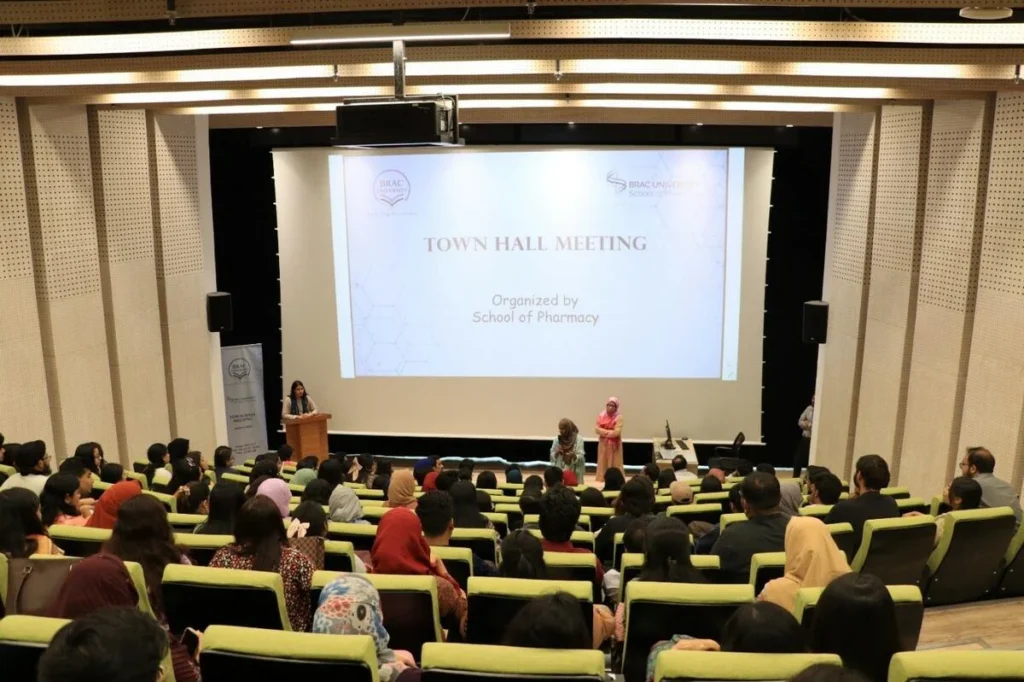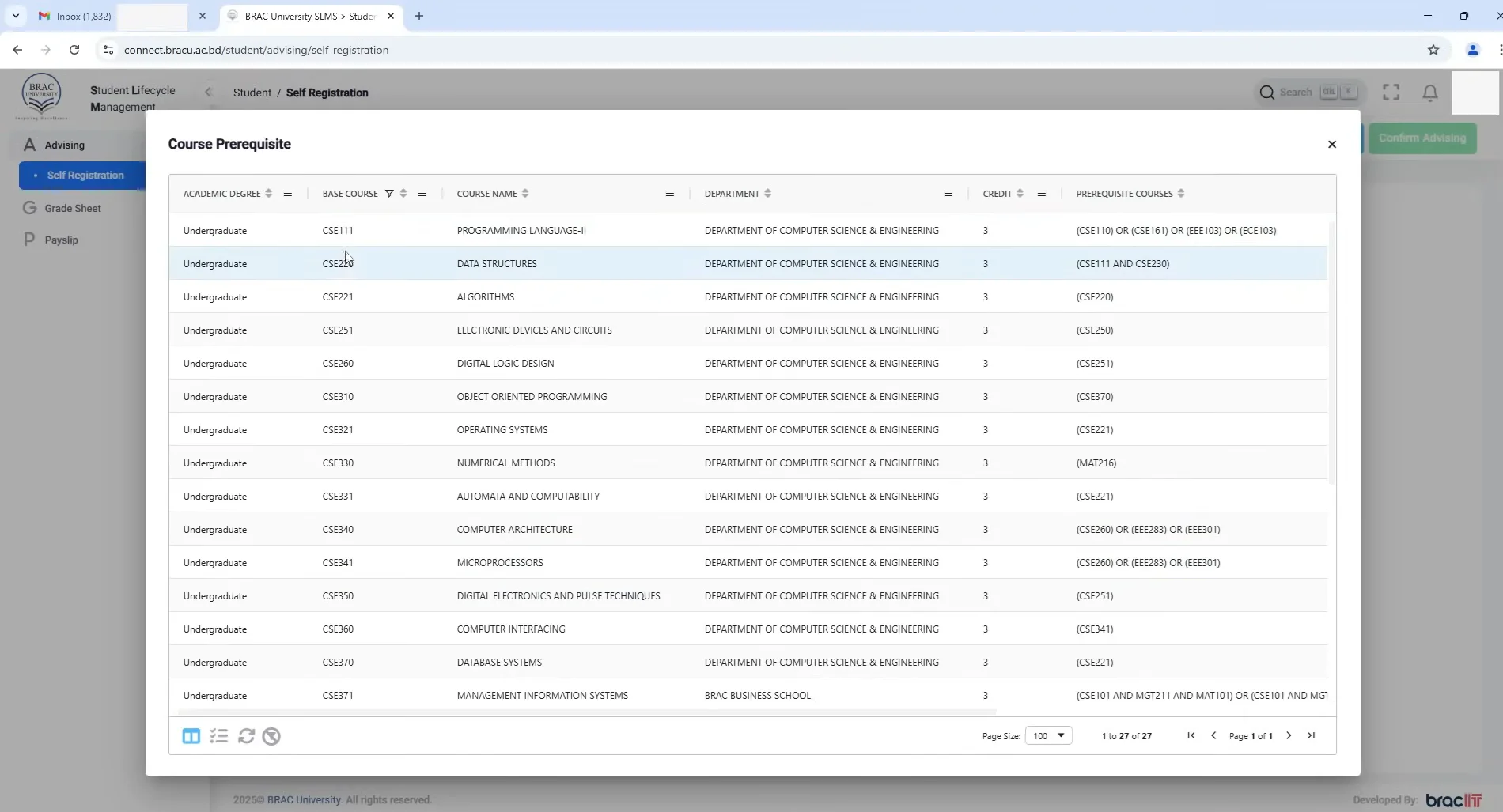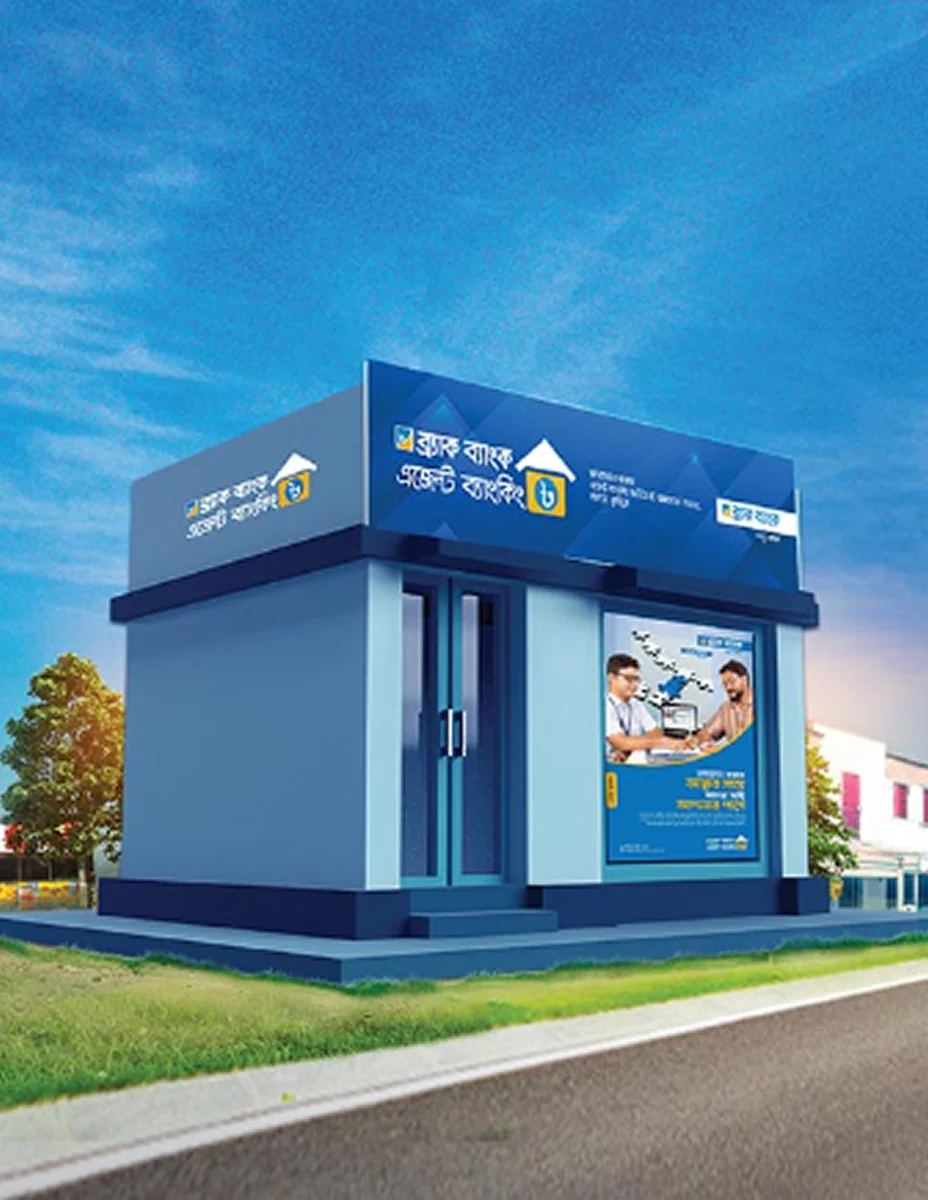The Challenge
As BRAC University continued to grow, its Student Lifecycle Management System (USIS) began to show signs of strain. While it served its purpose for years, it could no longer keep up with the demands of increasingly complex operations and large student body. At the heart of the issue was a system that struggled to scale, especially during key moments like course advising and admission cycles.
For students, this meant long waiting times for course registrations and an often frustrating advising process. For staff, inefficiencies were felt across departments, from course offering, scholarship management to payment reconciliation. It became clear that a new system was necessary, one that could handle the volume of data, seamlessly connect with external systems, and provide real-time, accurate results for both students and staff.
The Solution
brac IT stepped in to create a dynamic, flexible platform that could address not only the immediate needs of the university but also scale for the future. And thus, BRAC University Connect was born.
USIS was operated with on-premise infrastructure, limiting scalability. It could serve around 100-200 applicants during a pre-advising slot. During peak times, the system would often malfunction causing enormous delaysto the process. We first developed a cloud-hosted interim solution that would only handle advising, thus offloading the strain from USIS.
This stopgap halved the entire pre-advising duration as it could easily handle 1,800 students in minutes. By leveraging hybrid architecture and Kubernetes deployment, we ensured that the platform would scale effortlessly as student enrollment grew. The solution would eventually become part of the Registrar’s module. For the summer of 2025, around 20,000 students used the platform for advising.
But it wasn’t just about efficiency. Connect had to make the experience even better for learners. There were manual hoops involved for students to drop a course. It would entail physically visiting instructors, deans, Registrar’s Office, and F&A for approvals. Data was recorded on paper and had no digital traceability on USIS.


Students now have a one-stop portal to complete these actions without having to bounce between different offices or systems. Issue of certificates and approvals requiring manual signoffs are now possible over Connect. The client used a financial management solution which wasn’t integrated with USIS. We integrated the financial solution so students and staff could easily manage payments, which was previously done manually. The ability to automate these processes has given staff the time and tools they need to focus on the student experience, and not just the paperwork. As of June 2025, Connect is integrated with a national payment gateway, and seven banks for students to make payments. These were completed in just six weeks with further payment integrations planned in the months ahead.
The university uses Koha, an open-source library management software which isn’t designed to process membership fees, late fines, demurrage for lost books etc. These reconciliations are now recorded and processed on Connect after integration. Managing admissions at BRAC University is a hefty undertaking. With around 20,000 applicants tackling entrance exams each semester (totaling over 60,000 in a trimester year), the staff faced a grueling manual process.
Here’s how the admission dance unfolds. Only 1,800 examinees who pass the MCQ test moves to written exams. Seat allocations for applicants needing specific facilities (e.g. labs for science or halls for architecture exams) are processed. The applicants are notified via SMS and emails about date, time, venue etc. Post-exams, the staff produce merit lists and assign courses, before finally moving to fees and payments processing.
Connect automated this elaborate dance. Data slip-ups for applications or finances are neutralized, and the staff now handle it all with precision. Seating arrangements flow smoothly, easing the burden and boosting efficiency across the board. Email and SMS integration with custom audience targeting have been made available to notify specific cohorts.
USIS didn’t have a scholarship management module, and students were required to apply manually every semester. Connect has automated this recurring process. If students sustain the required academic performance, Connect records their eligibility for waivers in the following semester. Being integrated with the university’s financial solution, pay slips and reconciliations are generated accordingly with the waivers.

- The Dynamism of Connect
The complexity of Connect stemmed from the university’s open credit system. The volume of edge cases accounted for 40% of the business requirements, forcing formulation of new policies and rules.
A single user story could have numerous possible outcomes. For example, the credit fee for a business and a computer science student are different even if they take the same course. It’s because the two programs have different fee structures and apply universally regardless of courses taken outside their academic programs.
A single pay slip for course registration can have over hundreds of probable outcomes depending on situations. Students can pay course fees in instalments. They may be under scholarship which affects the value of the instalments. Students can drop courses, which bear financial implications with relation to course fees, academic credit, scholarship, and previously paid amounts.

There’s even more. Depending on the year and semester of enrollment, fee structures will vary. One student could be paying $100 per credit whereas another pays $125 for the same program. This is a single user story that can have implications for five interconnected modules of Connect. In a single semester, students in the same academic program could be following different curriculums. To manage this effectively, we embedded a Rule Engine inside Connect. This algorithm runs checks for events against all prerequisites and house rules. For instance, if a student prefers to take a 400-level course, university rules stipulate that s/he must finish a particular 300-level course first.
These courses also have academic credit assigned to them, which is in turn entwined with financial credit. It’s possible that a course has an academic credit of 1.5, but a financial credit of 3, and could also have a lab component. It can have a total of 100 seats a semester, which can be further allocated for students from different programs – all configurable on Connect. And not all students are equal. Rules apply differently, and so does software logic. Our client runs programs for unique scenarios. There are Visiting Students who study for a semester or two and are billed under a completely different fee structure. Audit Students sign up for a trial semester. They appear as regular students but don’t take exams or get certificates. The university also scouts and attracts highly meritorious students with fully funded scholarships. They pay no admission or course fees. Connect is designed to cater for these and much more.
The Road Ahead
With 70% of the core features now live and functional as of June 2025, the future of Connect is still an open expanse. In the coming months, we’re rolling out additional features like dormitory management, and a recommendation engine that will suggest courses based on student interests, further personalizing academic experience. Connect will also establish a bridge with the F&A module of BRAC university’s ERP.
We’re continuing to optimize the platform to ensure it meets the needs of an expanding user base. With further integration and more user-friendly enhancements in the pipeline, BRAC University will continue to drive educational excellence with digital readiness and maintain its leadership in higher education.


About The Author
Jonathan Das
Communication Manager
Jonathan Das is a Communication Manager specializing in solutions storytelling and product marketing. He’s previously worked in brand and social media management, fund-raising, and audio-visual production roles with consumer brands, global non-profits, and startups. Jon holds a BA degree in communications from University of Liberal Arts Bangladesh. He enjoys making music, going on long walks, and reading about culture and technology.









